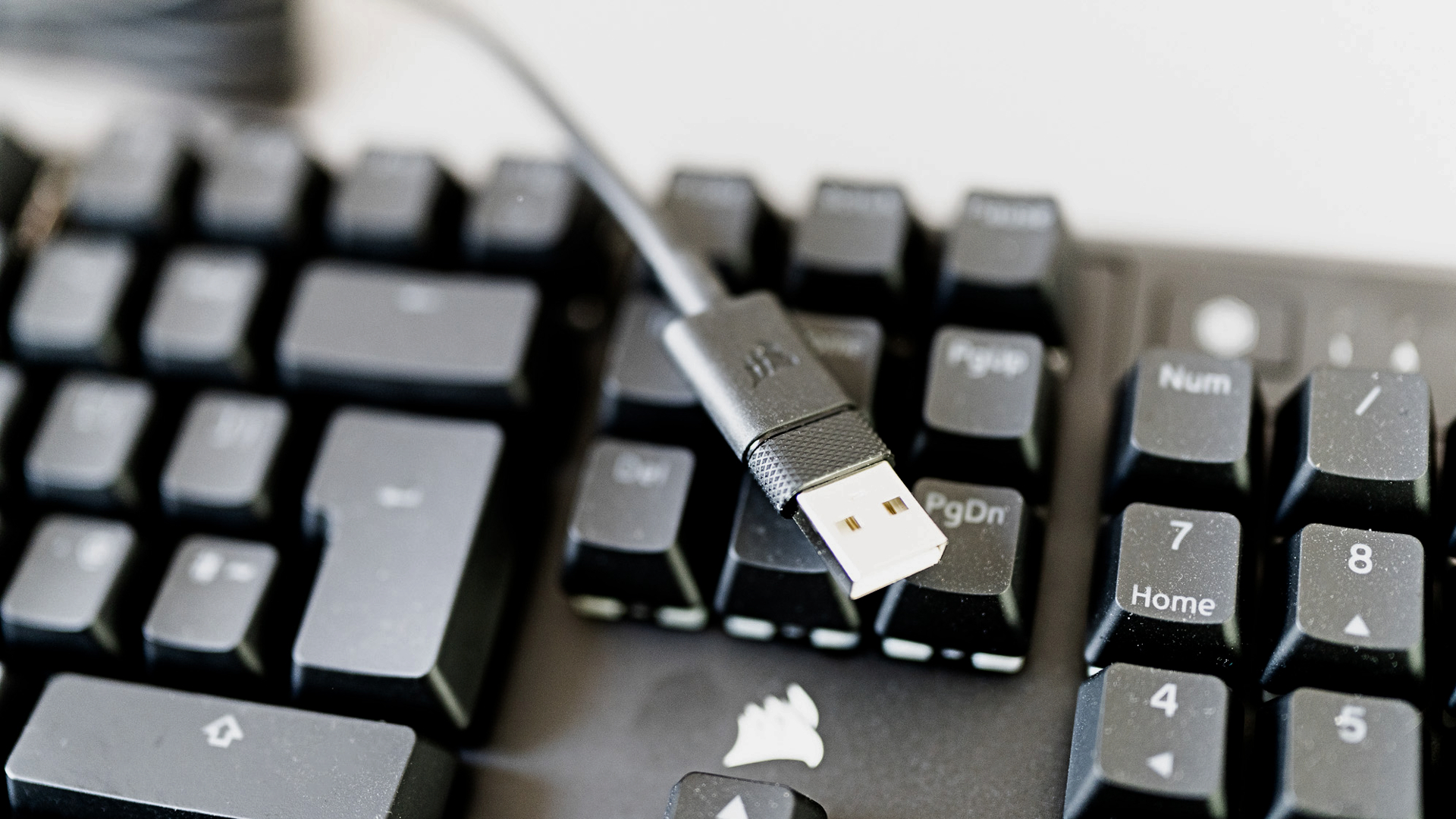
Clicky but quiet, the Corsair K70 Core RGB is an excellent mid-price board.
Switches make a mechanical keyboard. Your chosen plank can have all the extra features and RGB in the world, 15 USB ports at the back and an FM radio built in, but if pushing those keys down feels like stroking the back of a porcupine, it’s not going to become a favoured gaming companion.
Lucky, then, that Corsair has been thinking a lot about keyboard switches recently. Exhibit A in this investigation are the Hall effect magnetic switches in the K70 Max, which went down quite well in the PC Gamer review. In the K70 Core you’ll find something slightly different, pre-lubed Corsair MLX Red linear mechanical switches, which are making their debut here, but still with a whole lot of sound-damping foam, just like the K70 Max.
Core keyboards are a step down from the top-of-the-line Pro boards in Corsair’s range. This doesn’t exactly make them budget models, as the price is still higher than that of truly cheap examples, but like a politician desperate for re-election they focus on the core values that make a keyboard great.
These are: having keys? Check. Flippy feet at the back? Rubber pads at the front? Check and check. USB connection? Check (though a wireless version is also available for the profane and corrupt). Absolute dust and fingerprint magnet? Check. Little dial in the top corner that looks neat but you’ll probably never use? Check… though we’re diverging from core values and into oppugnant morality here.
Otherwise, it’s the usual mix of aluminium and plastic, RGB LEDs and a smidge of flash memory (enough for five profiles). It also uses a USB wired connection that sees a rubber-coated cable emerge from the rear-left of the chassis and make its way round to the back of your PC. A USB hub would have been nice here, but we don’t get one. The cable has a plug on the end that looks for all the world like a USB-C plugged into a USB-A adapter, with a grippy bit to allow easy pulling off. However, after a heavy session of vigorous tugging it remained stubbornly attached. It seemed a bit extreme to get the pliers out, so we’re just going to have to accept that Corsair made it look like that on purpose.
But there’s also foam, and it goes a long way to soundproofing the board. You’ll still get a clicky sound if you bottom-out the keys, but there’s no case ping (probably thanks to the foam) and lubed switches mean actuations are silent too – though it does still make a sound as the key returns to its resting position following a press. While it’s never going to be as silent as a membrane keyboard, if you really try you can switch between a glorious mechanical noise and a reasonably quiet typing action.
Performance is excellent, with a 1,000 Hz report rate and full anti-ghosting rollover. The important thing here is the feel of the keys, and they are superb. They sit fairly high, mushrooming out of the deck as if left behind by frolicing fairies in the night, their stems clearly visible if you hold the board up and peer into the edge. Push down on them and you experience a smooth descent to the baseplate, with 45g actuation force and a pre-travel distance of 1.9 mm, before bottoming out at 4 mm. There’s a degree of adjustability in this too, if you’re the sort to half-press a key while lining up a shot.
There are no clever optical or adjustable actuation systems here, and you can’t hot-swap anything, but there is a magnetic wrist rest in the box with a strange rough texture that makes you glad you’re not touching it with your fingers.
By default, the dial adjusts your PC’s volume, and there’s an iCUE button next to it that maps to play/pause as there are no dedicated media keys. Much of the functionality can be customised in the iCUE software, which as well as remapping keys and cycling through RGB lighting schemes (there’s a keyboard shortcut for dimming which is much faster than opening up an extra app) can also record macros and change between presets for the control dial.
That dial is an exception to the ‘everything is customisable’ rule, but you can use it for brightness, scrolling and zooming as well as volume. It’s also an exception to the slippery lubed feel of the board, as not only does it have a textured surface and yellow highlight paint that’s not found anywhere else, but it jerks around with a tinny click that’s so different from the rest of the keys it’s almost as if it came from another keyboard entirely.
The iCUE button next to it is also the only key on the board not balanced on a high switch, so you have to dive over the surrounding keys to find it, and don’t get satisfying feedback from pressing it.
✅ You’re replacing a membrane keyboard: The K70 Core doesn’t come with much customisability, but it will feel like a step up from just about anything you’ve used before.
✅ You want something easy to type on: The K70 Core is breezy to bash out an essay on, and won’t make too much noise.
❌ You’re looking for something more like the K70 Max: This isn’t a flashy feature board, but one designed to be a pleasure to use.
With storage for five profiles onboard the board, FN+ F2 can be used to switch between them, but if you’ve got a load of iCUE devices flashing away on your desktop it won’t communicate with them, forcing you to use software profiles.
Fire up the app and you get access to Corsair’s Mosaics, which are pre-set lighting patterns that are simple to activate. Community-created Mosaics can be found on a digital store, which thankfully has a degree of curation as even the Romans knew the levels of detail and lewdness that could be contained in a simple arrangement of square blocks.
The lighting patterns and customisability are nice to have, but the reason you’ll buy the K70 Core sits between the keycaps and the baseplate. These silky-smooth switches are a big draw for the board, and despite having a limited feature-set in a competitive market segment (and with it being possible to pick up a mechanical gaming keyboard for much less) its quietness and efficiency of operation mean the K70 Core is still able to stand out.












